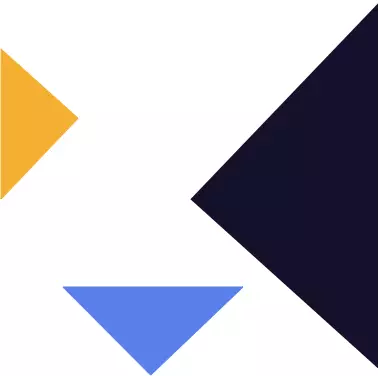According to Google Trends, the search for the term “Meta” exploded after the Facebook Connect event in November 2021. But for sure it was a trend way before Facebook’s rebranding.
The word “Metaverse” is a consolidation of the prefix “meta” which means beyond and “universe.” It was composed in a science fiction novel called Snow Crash by Neal Stephenson in 1992. He pictured the term as the future iteration of the internet but in a very dystopian way. Now 27 years later, Mark Zuckerberg called it as “embodied internet.” The definition might not have changed dramatically, but the technology behind it did.
So, what exactly counts as metaverse, and does it require bulky devices to be experienced? No. Graphical human interfaces are helpful tools to feel the immersiveness of the virtual content, but they are not a necessity. Our voice assistants and even our smart bands have a place in this term. The Long definition for it is; a massively scaled and interoperable network of real-time rendered virtual worlds that can be experienced synchronously and persistently with an individual sense of presence. It operates within the boundaries set by its creators. Essentially, it’s an extension of what we define as real [1].
The metaverse holds limitless possibilities with a variety of different subjects. There is way more space than just one company or a person can fill. It is full of uncharted territories thus, you can easily get lost while deciding where to focus. Luckily, an entrepreneur named Jon Radoff layered major headlines for us to use as a map and talk about it in a more structured way.
The Metaverse Value-Chain by Jon Radoff [2]
Imagine the last concert you went to in the physical world. You’ve purchased a ticket with designated seats, had a conversation with your friends, tried to get a good view of the stage, and hopefully enjoyed the show. Now imagine always having the best seat, being able to talk with your friends without limitation of physical location, watching your favorite show, and even being the rockstar you came to see. This scenario can be extended to games and movies too. It broadens our consumer position to creators and the good part is it's not just one-sided. The metaverse will be shaped around our community interactions.

Within the metaverse, things are changing rapidly and new curated experiences require people to explore them. The discovery layer includes solutions and methodologies to answer the question of “how”. Physical-world advertisement rules may still be applicable in ever-changing digital worlds but it is only logical to say community-driven content will be more valuable than spam mails when deciding the most dashing places among the metaverse.
This layer also is not specific to this topic and it’s most probably the creative folks’ favorite one. Just like the beginning of the internet, we need content for people to consume. But before that, we need to create them. Engines like Unity, Unreal, and Nvidia's Omniverse are making the creation process smoother. It’d be beneficial if we briefly summarize how did we arrive at this point.
- ● Pioneer Era: Do you remember the first websites around? They were static and mostly not interactable. Visitors couldn’t impact or contribute to the content. and no one other than the developers could create content on digital space. This era was dominated by computer people because it required a low-level understanding of programming concepts and things needed to build from scratch.
- ● Engineering Era: It includes “the things that you can use to build other stuff.” Good examples can be listed as software libraries, game engines, or SDKs. They are speeding up the development process and enabling easier development.
- ● Creator Era: In this is the era everyone can focus on the creation project instead of the tool they are using. Just like the no-code solutions we are using nowadays.

Spatial computing includes solutions that mingle the physical world with the digital one. We can either capture and transmit input from the physical world to the digital one or vice versa. You might have heard of Apple’s 3D object capturing project. It is using Lidar (light detection and ranging) sensors to scan the physical object and create its 3D twin in digital space. There are a few existing client platforms specialized in web-dependent solutions like Niantic’s Lightship and 8th Wall’s WebAR tool.

This layer represents the opposite of centralized tyrannies. As we mentioned earlier, the metaverse is created together. Not just one by a person or a single company. The technology that made this possible is called the blockchain. Blockchain is a public ledger that lives in the entire network. We can create global currencies based on this concept. NFTs (Non-fungible tokens) are one of the most heard uses cases in this layer. Units are unique and non-interchangeable. They may be associated with digital media files and can be sold or traded among wallets.

Elon Musk says in one of his interviews that we are already cyborgs due to our relationship with our phones. Human interfaces can be anything that allows humans control over machines. There are many different kinds of human interfaces with various looks. From very popular VR headsets like Meta Quest 2 to smart contact lenses like Mojo Lens, their aesthetics are evolving. And with every iteration, they are becoming more suitable and accessible for day-to-day usage.

We need this layer to convert bulky devices to tiny versions that we talked about in the previous layer. For instance, we need long-lasting batteries and a faster connection to improve performance in real-time events. Companies that are dominating the infrastructure layer are the oldest ones because we lived their evaluation over different domains. In metaverse, those kinds of improvements are especially crucial not only for entertainment reasons but healthcare or training simulations.
In conclusion, just like the term ‘internet’ being not disruptive by itself, metaverse will be disruptive when we put injunction with other things. A good Web 2.0 example would be combining geo-locationing with the internet and synthesizing Uber. There are almost an unlimited number of verticals and use cases to discover. So, it is important that we must keep investigating. But for a smooth transaction, if you feel like you need some visualization about how the metaverse with exaggerated looks, I suggest you spare your few hours to watch Steven Spielberg’s Ready Player One.
The creator ecosystem is expanding every day. But there are also existing players creating value and/or enabling the metaverse for us. Here is the Metaverse Market Map curated by Jon Radoff.

Market Map of the Metaverse by Jon Radoff [3]
p.s: We’ll love to hear your take on a world with the metaverse. Which layers do you think hold the best potential? Are you surprised to see any particular company on the market map?
References:



